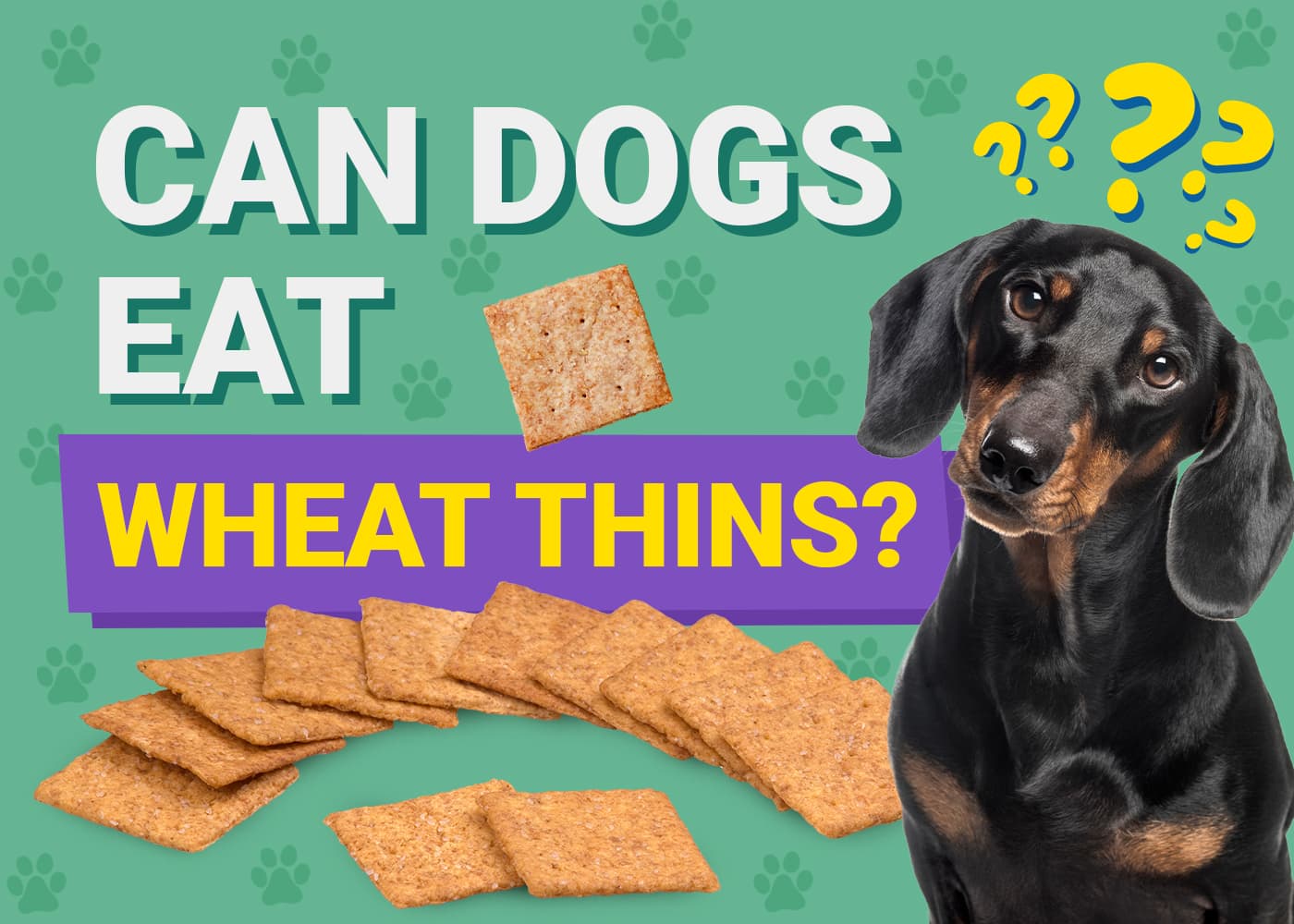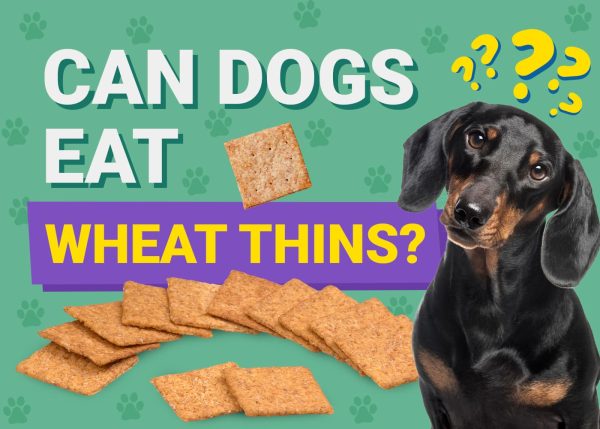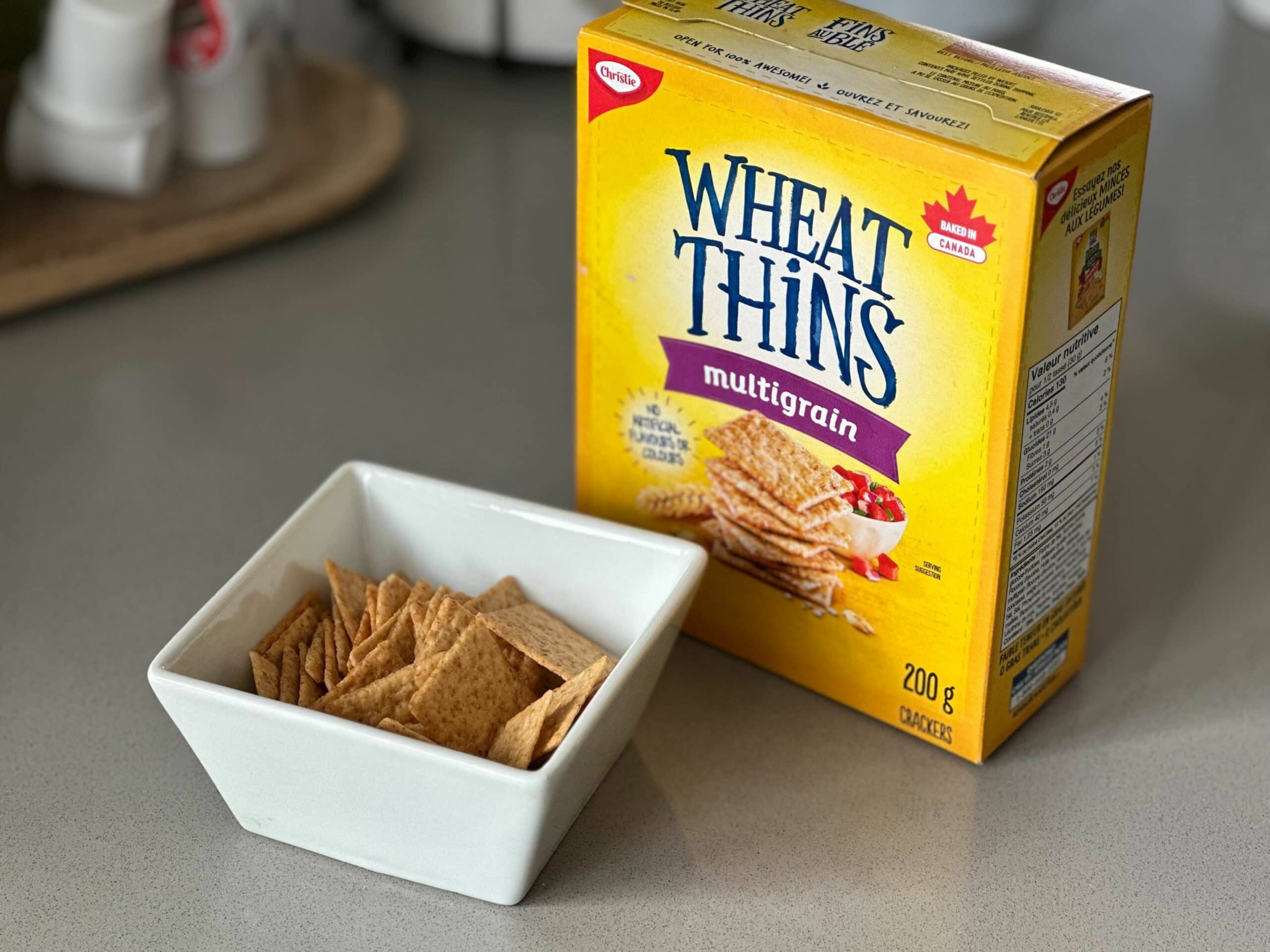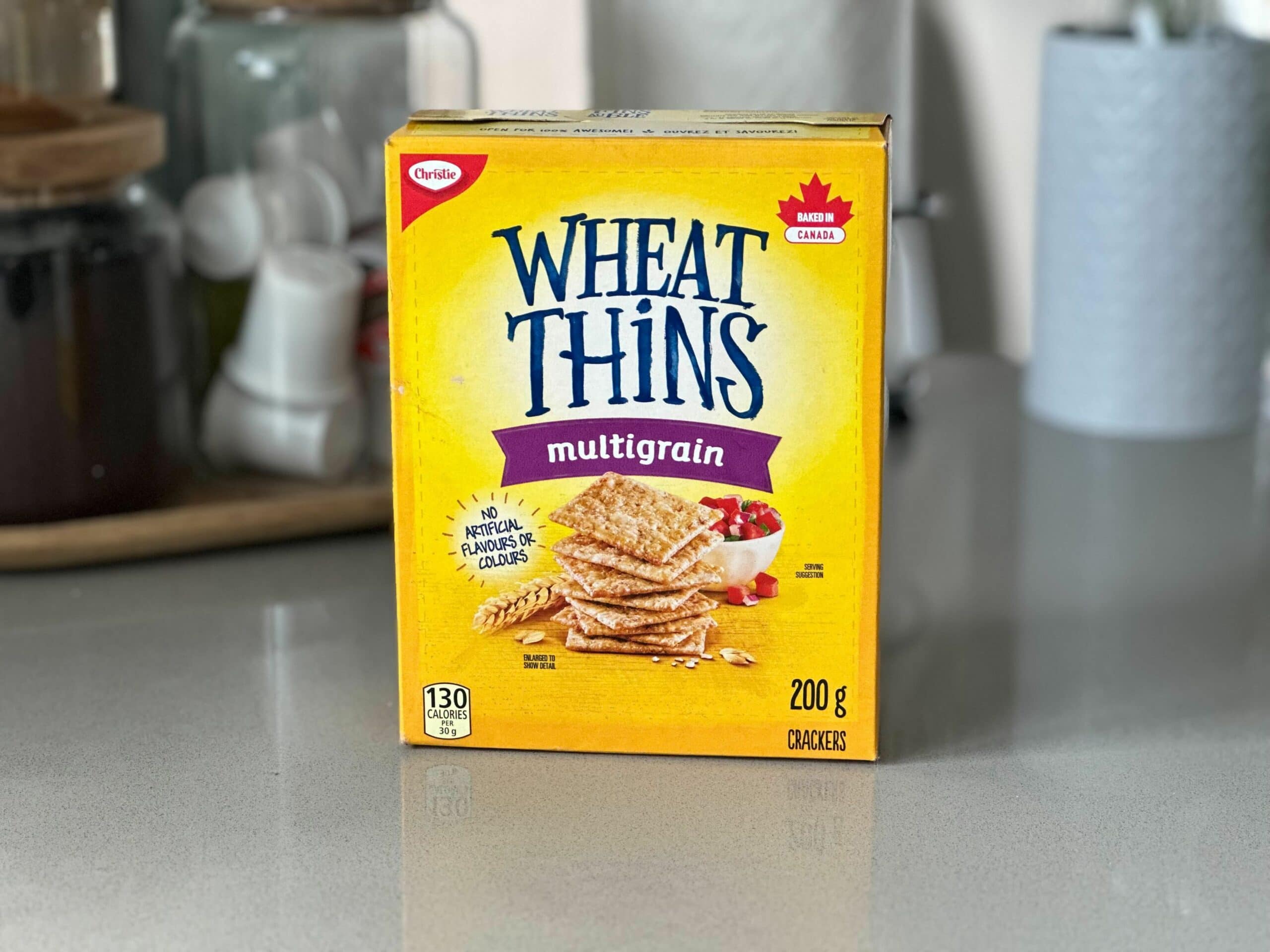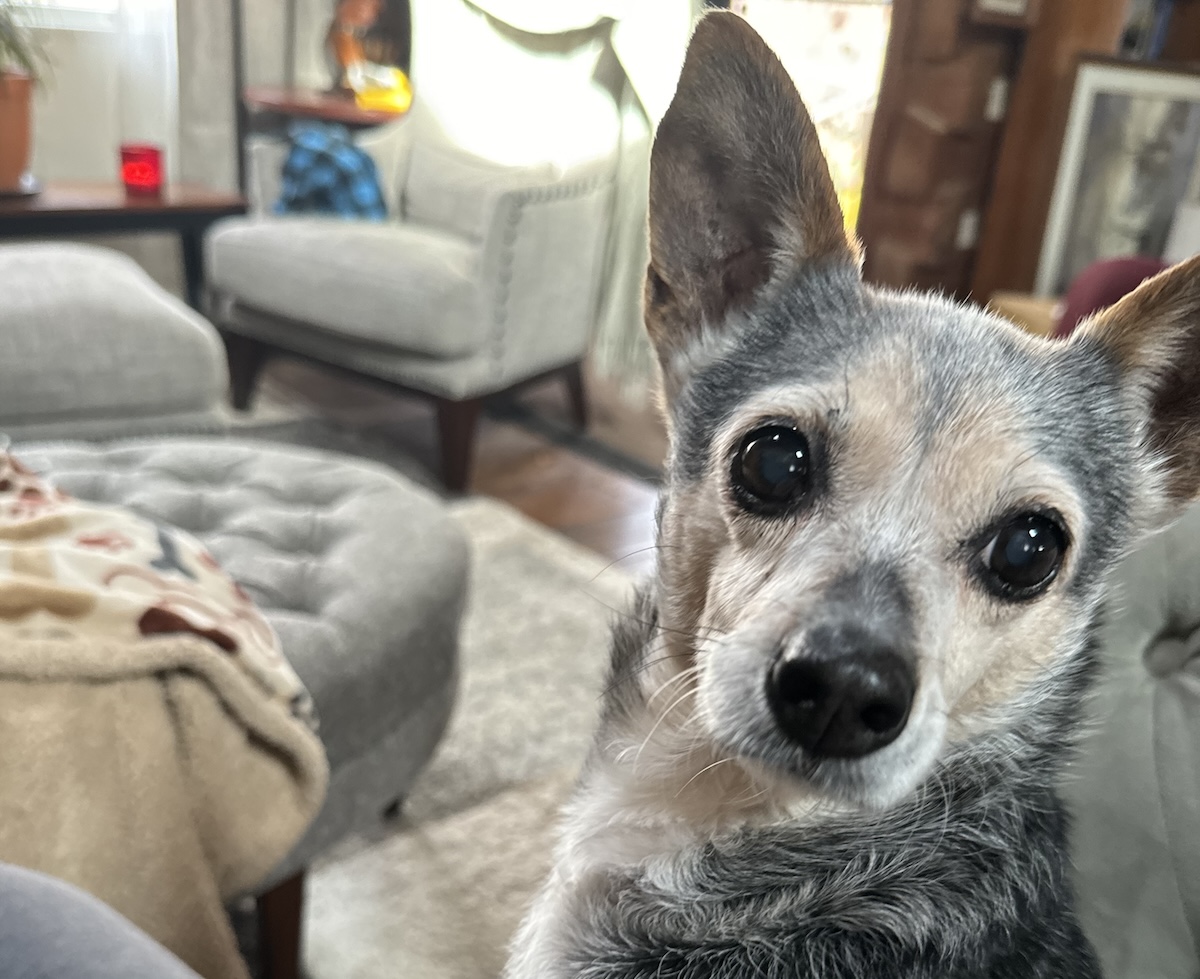Wheat Thins is a popular brand of crackers often advertised as healthy snacks. They are baked whole-wheat crisps that are relatively low in calories and often paired with other food items like dips or sliced meat. While Wheat Thins are tasty additions to any charcuterie board, curious dog owners might like to know if these crackers are safe for their pets.
The short answer is that dogs can eat Wheat Thins because they’re not toxic, but that doesn’t mean you should feed them to your pup. Keep reading to find out why.
Is It Okay to Offer My Dog Wheat Thins?
Just because your pup can eat Wheat Thins because they’re not toxic doesn’t mean they should. While your pet can eat a few crackers with no health repercussions, provided that they don’t have a grain allergy, most vets wouldn’t recommend making it a habit to offer these tasty crackers to your dog.
Not only do Wheat Thins have a high sat, fat, and sugar content, but a few of the flavored varieties also contain garlic and onion powders, which are poisonous for our canine and feline family members.
Nutritional Information for Wheat Thins
Before delving deeper into the unhealthiness of this food for dogs, let’s take a look at the nutritional information of the standard variety of Wheat Thins.
| Serving size | 31 grams (about 16 crackers) |
| Calories | 140 |
| Carbohydrates | 22 grams |
| Protein | 2 grams |
| Fat | 5 grams |
| Fiber | 2.6 grams |
| Sugar | 5 grams |
| Sodium | 200 grams |
Wheat Thins aren’t a significant source of any vitamins or minerals. Although they have a reputation in the human food world as being healthy, this is mainly clever marketing, as these crackers aren’t particularly nutritious.
Downsides of Wheat Thins
The biggest downside of offering Wheat Thins to your pup is that they’re high in salt, sugar, carbohydrates, and artificial preservatives.
Salt
While dogs do need salt in their diet, too much can be harmful. Sodium levels in a dog’s body are typically balanced. When the sodium amount in the blood becomes too high, water will get drawn from the cells and into the bloodstream as your dog’s body tries to restore the delicate balance. This can ultimately harm the body cells while affecting the brain and nervous tissue. In addition, too much salt can make your dog thirsty and lead to sodium ion poisoning.
Sugar
Sugar is not natural for dogs to eat, and as such, their digestive systems aren’t designed to process it. It’s not toxic but unhealthy when consumed in large quantities. While there isn’t much sugar in Wheat Thins, these tasty crackers still don’t offer much nutrition, so there’s no benefit to giving them to your dog as a snack.
In addition, dogs naturally get the sugar that they need in their diets from the carbohydrates in their food. Any additional sugar consumption outside of this can equate to an excessive sugar intake. Too much sugar for dogs can lead to health issues.
- Weight gain
- Dental problems (e.g., cavities)
- Upset stomach
- Changes in metabolism
Carbohydrates
Regarding the three macronutrients—protein, carbohydrates, and fat—Wheat Thins are mostly carbs. The most important function of this macro for dogs is that it provides energy. If too few carbohydrates are provided as a source of energy, your dog’s body will start making energy from other sources, like protein. A diet that’s composed of just the right amount of carbs will allow protein to be spared for producing and maintaining body tissues.
The key is finding the right balance of carbohydrates. Your dog is probably getting all the carbs that they need from their dog food, and adding excess amounts via snacks like Wheat Thins can cause imbalances in their body. This may lead to obesity and depleted vitality.
Artificial Preservatives
Wheat Thins are banned in the United Kingdom and some other European nations due to a controversial chemical found in the packaging of the crackers. Butylated hydroxytoluene (BHT) is a lab-made preservative that prevents vegetable oils from going bad, but it’s banned in Europe due to its potentially carcinogenic properties. While the crackers do not contain BHT, the bags used to contain them do. Fortunately, there’s no evidence that it can be harmful to humans, but the ban remains in place out of caution.
BHT is sometimes used as a dog food additive, but since it could be a carcinogen, we recommend reducing your dog’s exposure as much as possible.
Better Human Foods for Dogs
If your dog’s puppy eyes are begging for a taste of a snack from your plate, you can offer plenty of healthier and safer human foods instead of Wheat Thins.
Conclusion
While one or two Wheat Thins here and there won’t do any damage to your dog (provided that they don’t have any allergies to the ingredients), the tasty little crackers don’t add any nutritional value to your dog’s diet. If those sweet puppy dog eyes cause you to cave in and give your pet a bite of food from your plate, there are plenty of other, better-suited human foods that you can offer your dog instead.
Related Reads:

